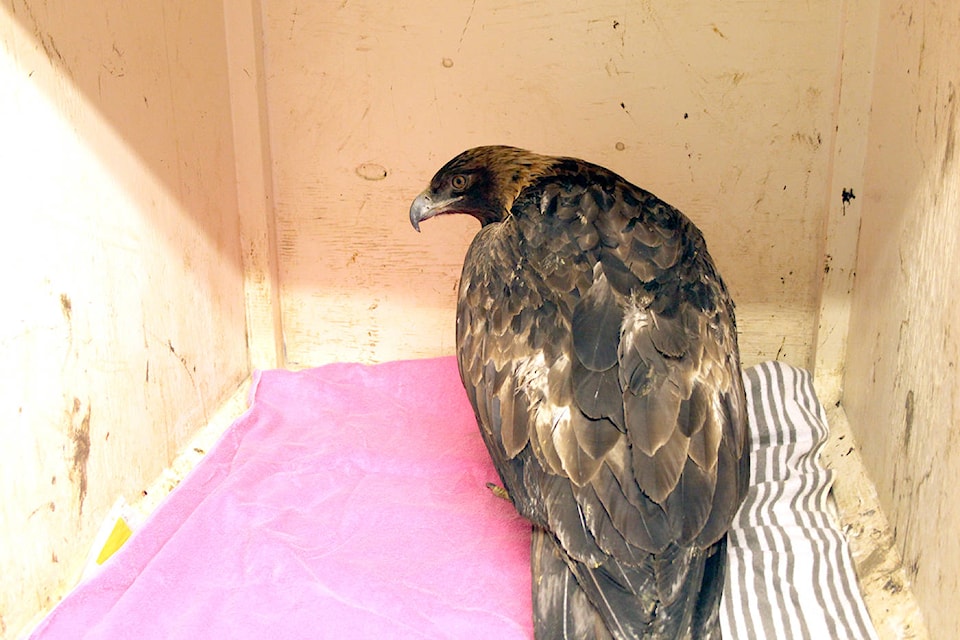Three months after a golden eagle suffering from lead poisoning was found in Elko, it has been released back into the wild.
The Free Press previously reported that the bird of prey had been found by an Elko resident near a deer carcass. It was promptly transported to Vancouver, where it was treated by the Orphaned Wildlife Rehabilitation Society (OWL).
Local wildlife advocates were concerned that a lodged lead bullet, a non-kill shot, had been ingested by the eagle when it was feeding on the deer. It prompted a call for a restriction on lead hunting products.
Look back: https://www.thefreepress.ca/news/sick-eagle-sparks-call-for-lead-bullet-restriction/
After arriving in Vancouver, the eagle tested positive for lead poisoning; its blood rating was 44.7 ug/mL. According to OWL, a rating of 60 is considered high but any rating above 20 is usually fatal.
The eagle spent three months with the OWL team in Vancouver, undergoing several weeks of treatment before being transferred to flight cages before its release on May 12. Three courses of chelation treatments were required to reduce the level of lead in the bird’s bloodstream. This took one month of five days on, two days off.
Following this, the team built up the eagle’s weight again. It was then put into an inside interim cage where it could stretch its wings and gorge itself. From there, the bird was placed in a 120-foot pool cage in which it could fly laps and regain his strength. After a month there, he was flown home.
On average, 25 per cent of the 700 injured birds that pass through the doors of OWL every year survive. Rob Hope, OWL’s raptor care manager, said they were thankful to see this bird survive and return to the wild. Survival usually depends on how quickly the team gets the bird. Thanks to the advancement of technology, the survival rate now is much better than it used to be.
“It’s beneficial to the whole organization to be able to have such a case and be able to save them,” said Hope.
“In previous years, I’m going back 10 years ago, unfortunately by the time we found out they were lead poisoned, it was too late and the animal already passed. But with the knowledge and skills we’ve got now, it’s rewarding to be able to get them past that hump and of course return them back to the wild.”
